
The desert-like landscape of Eastern Washington state is a far cry from the cityscape view from the 60th floor of Manhatta restaurant in New York City. Yet, the two came together beautifully at a recent dinner welcoming the Washington wine industry and members of the press for a long overdue visit.
Assembled in the room, we were introduced to Sadie Drury, vineyard manager/ viticulturist of Seven Hills Vineyard; Alex Stewart and Hal Iverson, two of the three winemakers at Matthews Winery; and Matt and Kelly Austin, owners/winemakers at Grosgrain Vineyards.
While the focus was decidedly on Washington wine, it was clear that everyone was ready to reconnect after the lengthy absence due to the pandemic. It was a pleasure to linger over conversations, foster new friendships and simply enjoy time together over a glass of wine… things we had all missed over the past several years.
And it was a special opportunity to renew my acquaintance with this wine region and expand my knowledge. While I have been aware of Washington wine for some time and understand the basics from a big picture perspective, it is a region with which I am less familiar. With over 1,000 wineries in the state, 90% of them producing less than 5,000 cases annually, our local wine shop shelves predominantly feature wines from the larger estates, thereby telling only a fraction of the story.
Thus, despite being the second largest wine producer in the U.S., this jewel in America’s wine crown is perhaps less recognizable to many wine consumers than California, Oregon or even New York. Yet, this is indeed a region worth knowing and is definitely one to watch. While Hal jokingly referred to Washington’s past as having once been the “wild, wild west”, it was clear that the state is distinguishing itself as a high quality, innovative wine region.
Still in its nascent phase (the majority of wineries didn’t get started until after 2001), the state’s grape growers and winemakers are embracing their innovative spirit. Taking advantage of a blank slate, there are no rules as to what can be grown or what can be produced; there is no signature to follow. Moreover, there is still a lot of trial and error, as newcomers investigate novel (to the region) grapes and winemaking production methods. Given this bent toward experimentation, not surprisingly, folks are reluctant to hang their hat on a single grape. Consequently, Washington holds lots of potential, with its current influx of energy, enthusiasm and outside investment.
Equally important, they recognize the need for flexibility and adaptation. As one of the winemakers said during our dinner, “If you are stuck in your ways, it won’t work.” This is especially true given the recent climatic shifts that they have endured over the past several vintages. In particular, in 2021 they experienced a heat dome event, forcing them to pick very late, based on taste instead of Brix levels or other numerical values. Plus, they found unusual situations with potassium due to the excessive heat, which had an interesting impact on the grapes and wines with regard to their pH, resulting in more alkaline, savory wines. They anticipate the need to pivot on a regular basis going forward. Case in point, the 2022 vintage is expected to be much cooler.
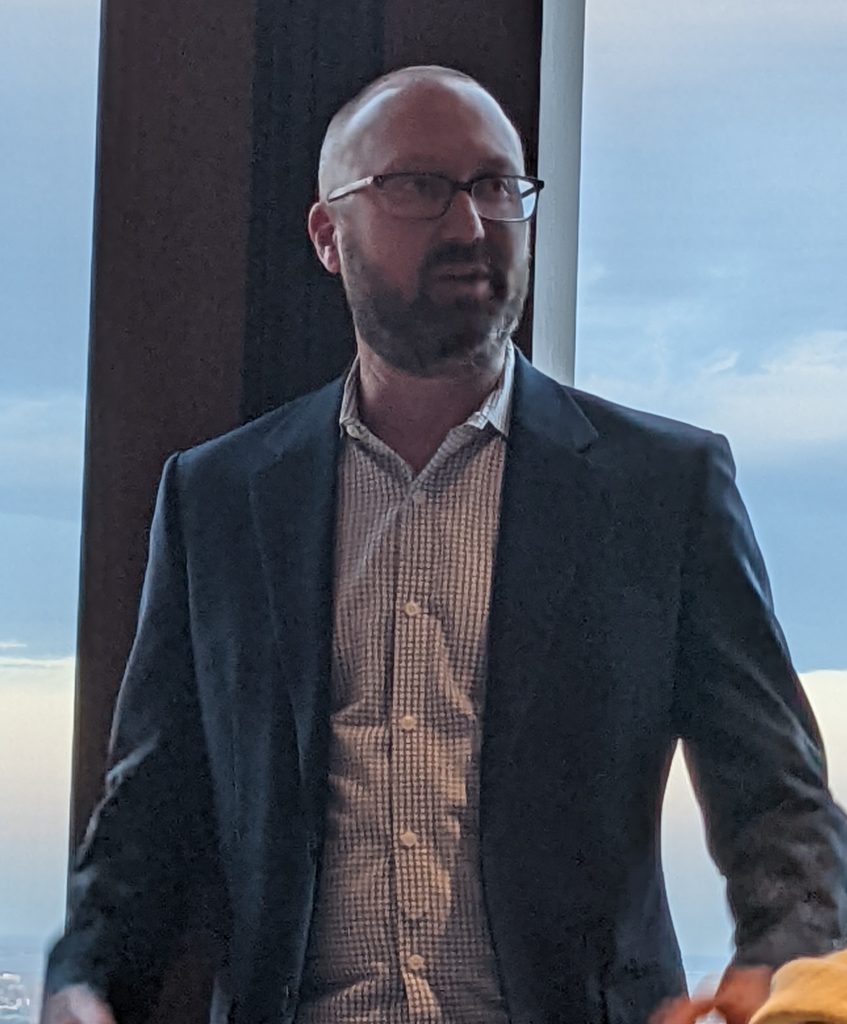
This desire for innovation and enterprise was immediately evident upon arrival, when we were welcomed with a pour of Grosgrain Les Collines Vineyard Sémillon Pétillant Naturel 2020. This sparkling wine offered up beautiful effervescence with a dry palate and was a great introduction to this winery with its unusual treatment of this variety. With a relatively romantic origin story, Matthew Austin and his wide Kelly saw the movie Sideways on their first date, inspiring a joint dream to open their own winery. They eventually left their previous careers, bought property in Walla Walla at a bankruptcy auction and launched Grosgrain Vineyards in 2018, adding a second vineyard on the Oregon side of the Walla Walla valley shortly after.
As further evidence of the pair’s love of trying new things such as unique grape varieties and techniques, we tasted their Grosgrain Philips Vineyard Albariño. Additionally, a Traditional Method sparkling wine produced from Cava grapes is planned. With a focus on sustainability measures in the winery, they use light weight bottles, which purposely don’t sport a capsule on the neck.
With a much lengthier tenure in the state, Matthews Winery was established in 1993. While the winery is situated on the west side of Cascade Mountains, they source grapes from sustainably farmed vineyards in the Columbia Valley and Walla Walla Valley and have established long-term contracts with their growers, nurturing relationships as part of their sustainability practices. Matthews is primarily known for its Bordeaux varieties and Bordeaux-style blends. Harvesting at high ripeness, they describe their style as one pushing extraction. They do use new oak but Alex clarified that there are a wide variety of options available to them ranging from grain texture, vessel capacity, and toast strength and aim to use oak sparingly and thoughtfully.
Equally important to these stories are the farmers who grow the grapes, which is why it was such a treat to meet Sadie. Although she comes from a farming family, she is the first to grow grapes in her lineage. She talked about the vaunted Seven Hills Vineyard under her jurisdiction and we were given the opportunity to taste the literal fruits of her labor.
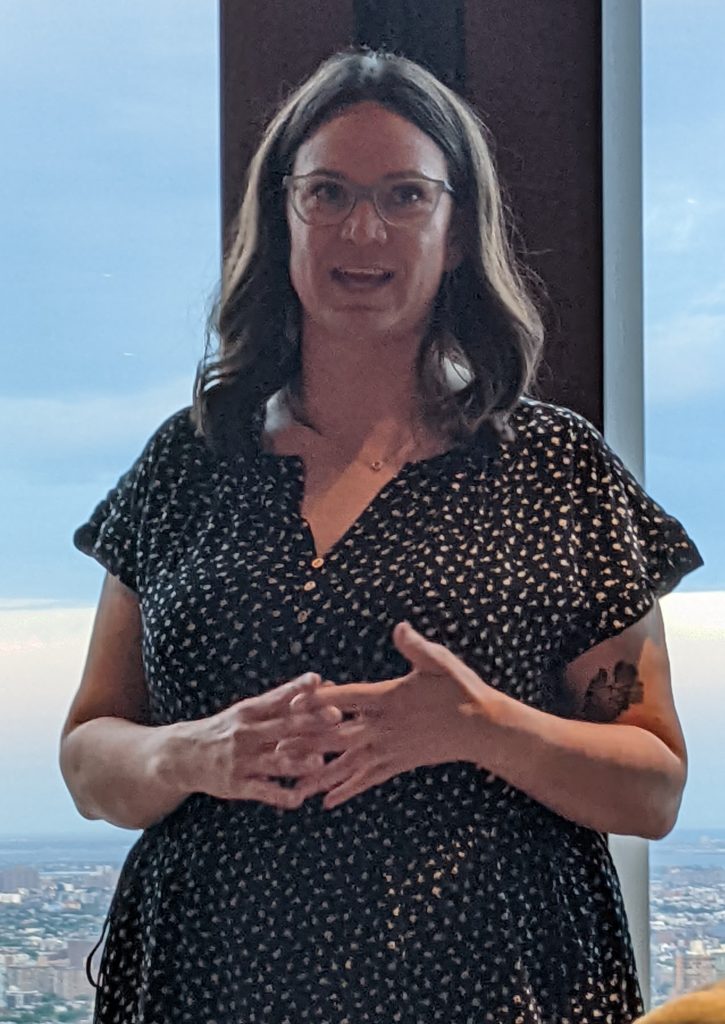
First planted in 1980 and later expanded, Seven Hills was one of the first commercial vineyards in the Walla Walla Valley and now encompasses over 200 acres. Jointly owned among three wineries who produce wines from 50% of the annual harvest, the remainder is sold to more than 25 other premium wineries. Sadie has overseen the vineyard for ten years and explained that it provides every orientation, high elevations, and is generally self-regulating.
Overall, it was a perfect evening, full of great conversations, delicious cuisine and fabulous wines. In many ways, Washington state wines are still figuring things out, but they are certainly not a diamond in the rough. These vinous gems are definitely worth seeking out!
TASTING NOTES
The Grosgrain Philips Vineyard Albariño Albariño 2021 is farmed organically and then fermented in a combination of concrete eggs, neutral oak and stainless steel. It displayed good acidity with medium body, green apple aromas, lovely minerality and long length.
In describing their Grosgrain Los Rocosos Vineyard Grenache 2018, Matthew finds Grenache to be similar to Pinot in that it reflects the place it is grown. Theirs is fresh, with savory and gamey characteristics, low alcohol and long length.
Matthews Winery 2021 Sauvignon Blanc Barrel Sample
Fermented in oak (85% of which was new), this wine is dry, rich, round, with medium acidity, medium to full body, with ripe citrus, and depth and complexity, culminating in long length.
We also tasted 2021 barrel samples of Matthews Winery’s Merlot and Cabernet Sauvignon blends from the Columbia Valley. Both were well balanced, with lush fruit, herbaceous notes and good acidity.
The Grosgrain Seven Hills Vineyard Syrah 2019 was produced in a cool, delicate, Rhone style, with no new oak and the intention of being a very food friendly wine. It was stunning, with ripe tannins, good fruit character, bright acidity and long length.
I had previously tasted the L’Ecole No. 41 Perigee 2018 (albeit a different vintage) and it was a pleasure to become reacquainted with this wine as well as taste the Pepper Bridge Seven Hills Vineyard Bordeaux blend 2019. Both are Cabernet Sauvignon-heavy blends with fruit from the Seven Hills Vineyard, with structure, power and intensity, yet still retaining elegance.
For more on Washington wine, see this previous post.

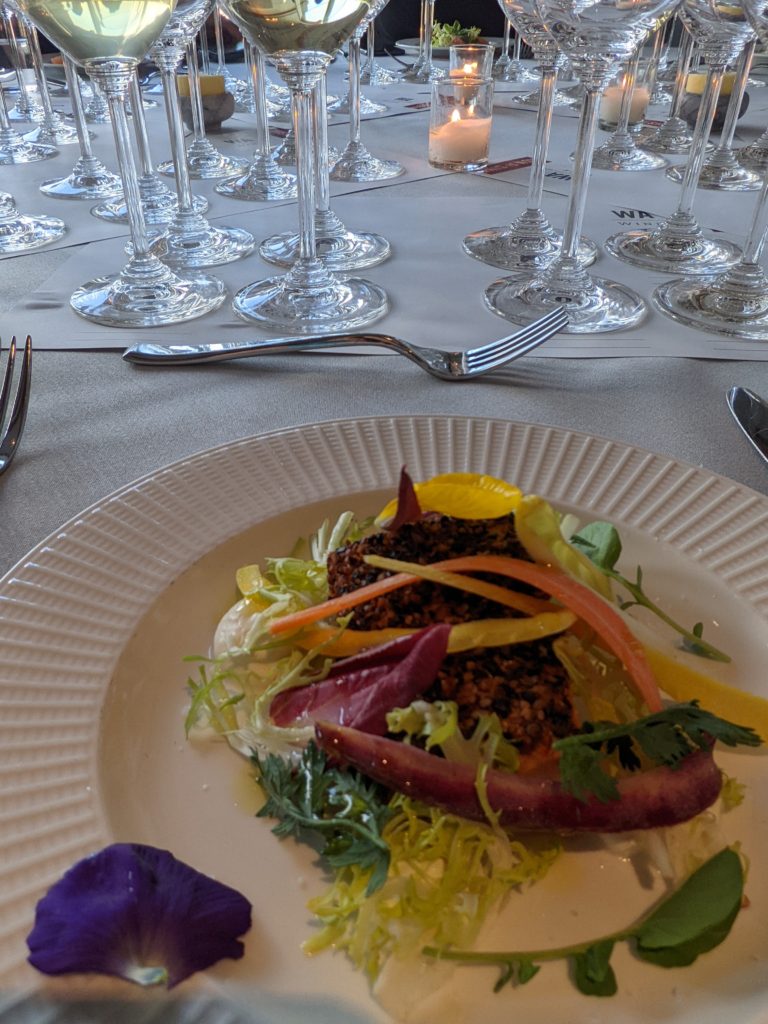


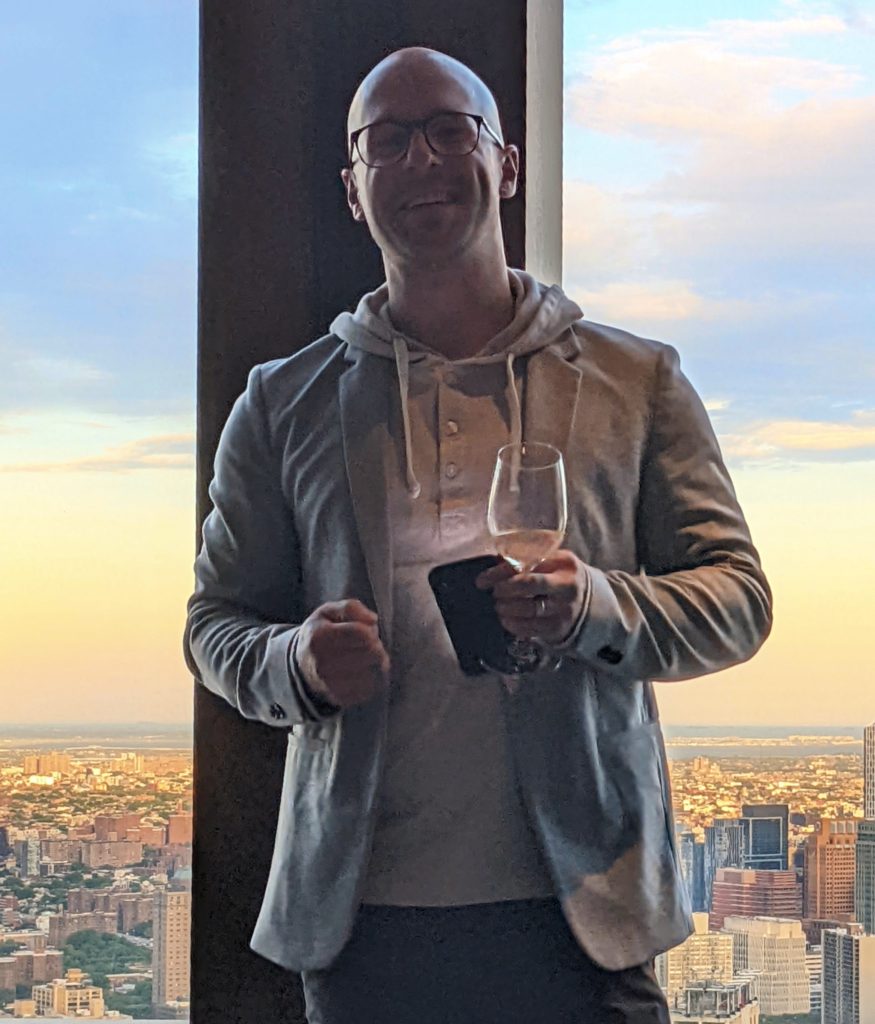


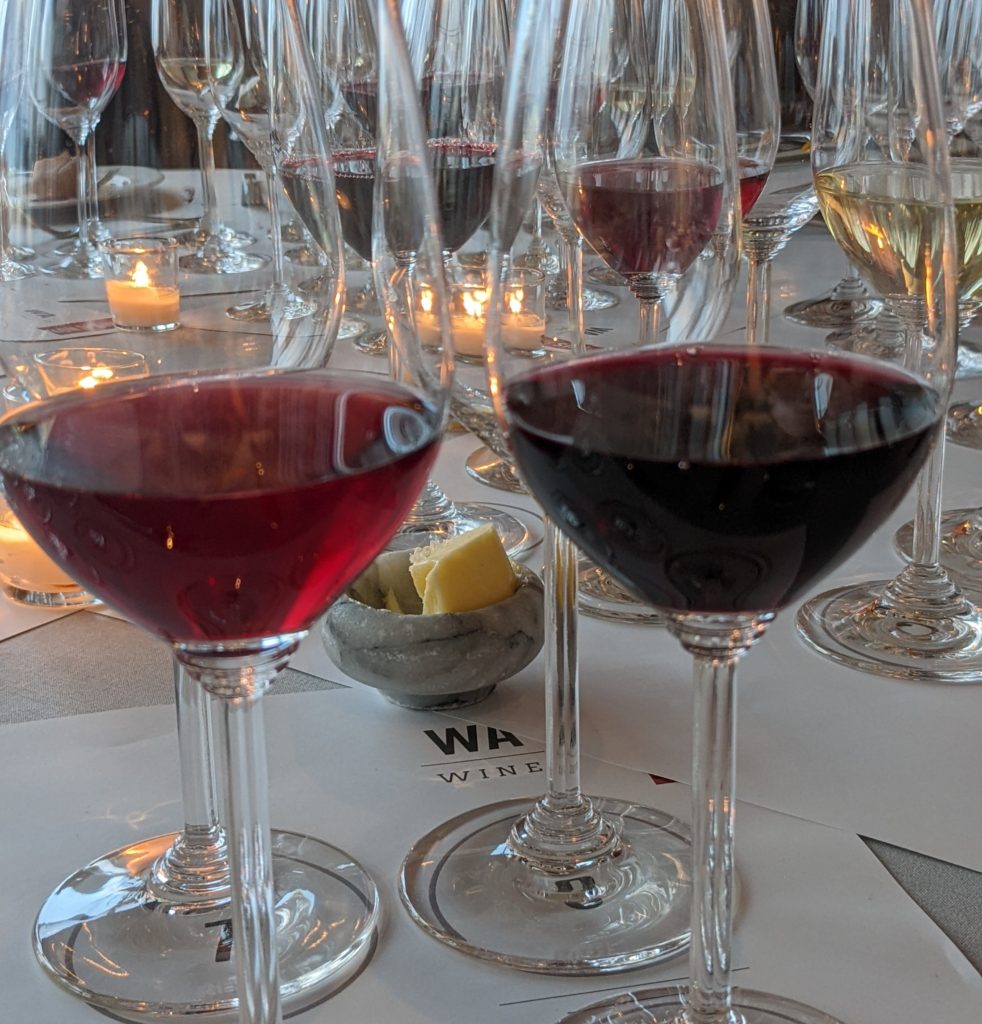
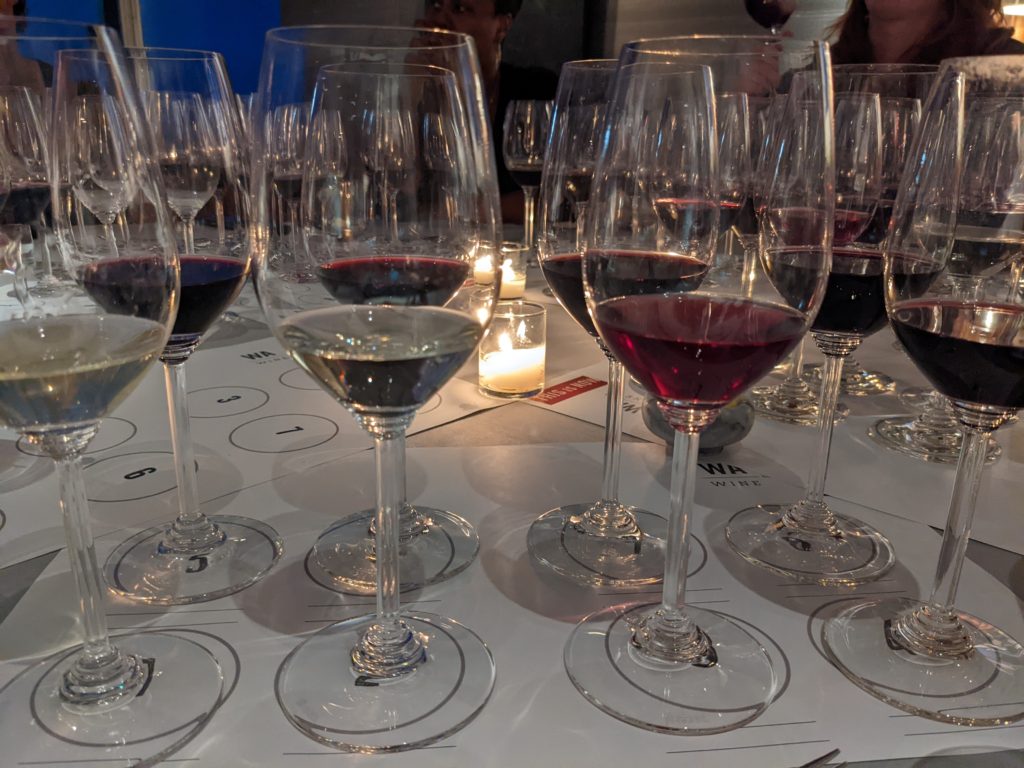
Thank you for an interesting and informative read, Tracy!!
Thanks! Glad you enjoyed it!